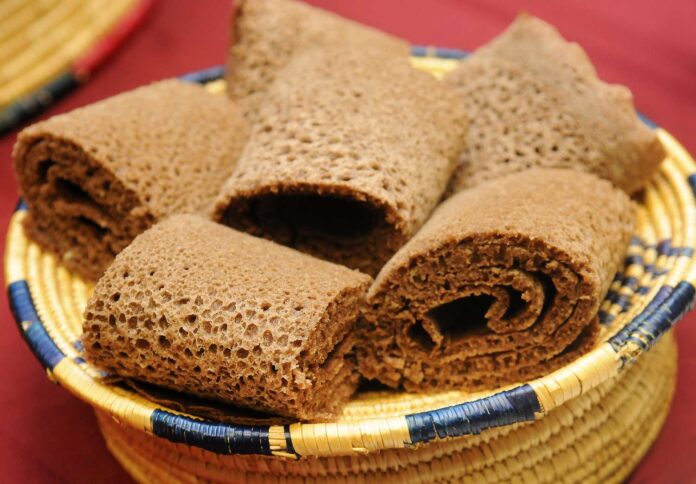:max_bytes(150000):strip_icc():format(jpeg)/InjeraGettyImages-536049837-356c1639e9f6499cb6455305557475ea.jpg)
Marcus Samuelsson and Fariyal Abdullahi are connected by their Ethiopian heritage. While Samuelsson was adopted by a family in Sweden, Abdullahi was born and raised in Ethiopia through the age of 17. At the 2024 Food & Wine Classic in Aspen, the owner and executive chef of Hav & Mar in New York shared essential ingredients and insights from their shared culture throughout a cooking demonstration of Oxtail Fried Rice and Tuna Kitfo with Injera Chips and Ayib.
“Here’s one of my favorite things about Ethiopian cuisine: We talk about having a good pantry as the basis of flavorful dishes,” said Abdullahi, a Noma alum and finalist for the 2024 James Beard Award for Emerging Chef.
These are the staples she brought or made from the Ethiopian pantry.
Berbere
The spice blend of chili, cinnamon, coriander, cumin, garlic, ginger, nigella, fenugreek, and ajwain is so beloved, Abdullahi brought a bag from Ethiopia to share.
“This is the spice that we use predominantly in essentially 90% of our food,” she explained. “It’s a sun dried chile powder. And the thing that I love about berbere is during the summer, we’re sun drying all the chile in our homes and everybody’s just sneezing cause it’s so spicy and hot, but each family kind of has their own unique recipes.”
Injera
Ethiopia’s ubiquitous flatbread is made with starter, flour, and water, and fermented for three days, with regular decanting to subtly dull the sourness. Injera becomes the base for vegetables, proteins, and stews. Tear pieces of the sour bread to scoop up the food by hand.
“This is a flat sourdough bread that we eat in Ethiopia, literally with everything,” said Abdullahi, who demonstrates making injera on her Instagram. “So this is both our utensil and the plate.”
Kibbeh
Kibbeh (or qibe) is an Ethiopian spiced, clarified butter, much like ghee, the clarified butter predominantly used in Indian cuisine. As the butter is clarified, cooks add spices like nigella seeds and false cardamom, a larger sibling seed of cardamom that Abdullahi described as a hybrid of lemon verbena and oregano.
“It’s very herby and spicy, so our base butter, the foundation of our cooking, already starts with a lot of flavor,” she says.
Ayib
This Ethiopian cheese with elements of ricotta and feta is made with a quart of buttermilk, a cup of yogurt, and a quarter teaspoon of salt. Abdullahi mixes the ingredients in a saucepan, then simmers on low heat for a half hour. When it’s curdling, she removes the pan from the heat to sit for another 30 minutes, then strains through a cheesecloth and lets the ayib stand until a quarter of the moisture remains to serve chilled.
“I know it sounds intimidating to make fresh cheese at home, but you guys can do it. Anyone can make fresh cheese,” Samuelsson said, offering a quick riff. “Bring to a boil and simmer for about 20 minutes and you have your own ricotta, you have your own whey. Let it sit for a little bit, [then] add chives, black pepper, lemon zest to that. It is super delicious.”



